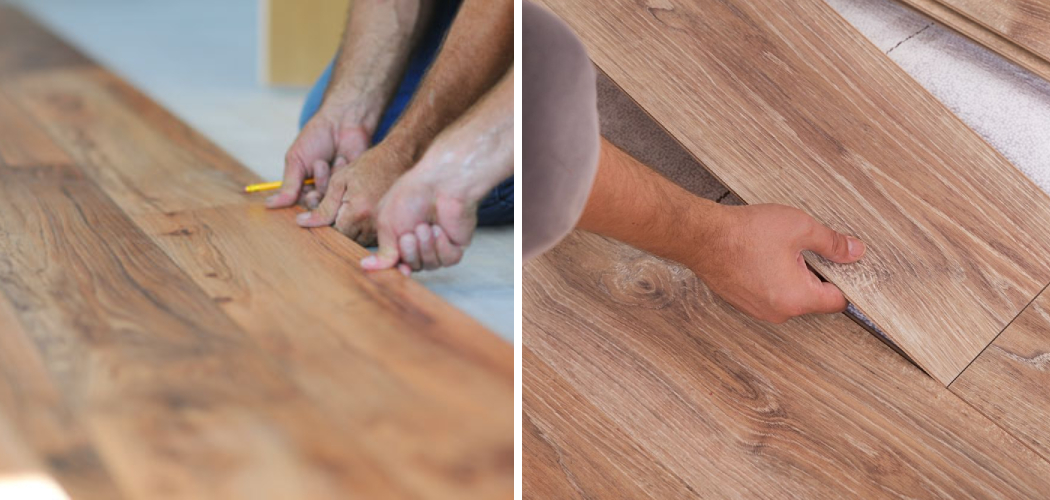Are you considering replacing the laminate flooring in your home? While this type of flooring offers many benefits, it’s important to dispose of it properly and safely. Not only does doing so help keep family members and pets safe from potential harm, but it can also reduce landfill waste.
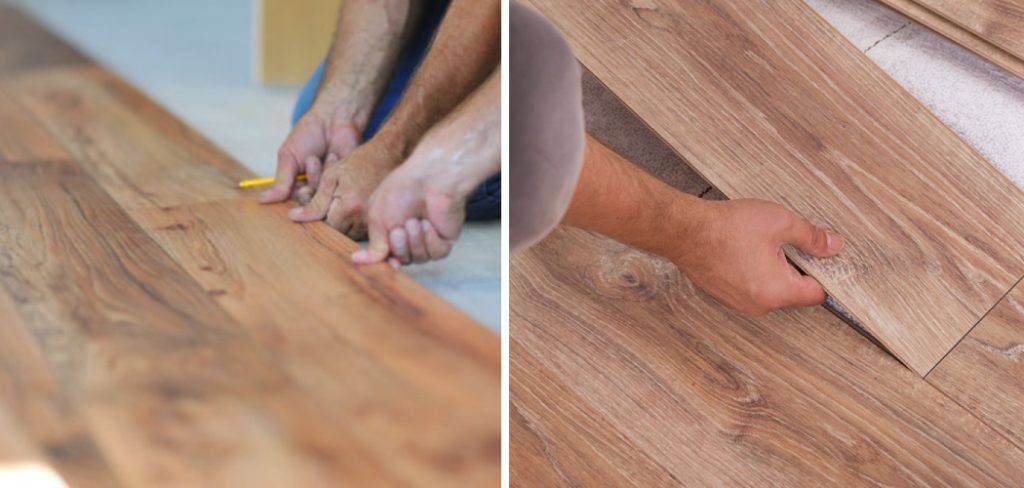
In this blog post on how to dispose of laminate flooring, we’ll provide some tips on how to effectively get rid of your old laminate flooring. From how to prep the area for disposal to selecting a disposal method that is best suited for your project, we’ve got you covered! Read on to learn more about disposing of laminate flooring correctly and sustainably.
Step-by-step Instructions on How to Dispose of Laminate Flooring
Step 1: Gather the Necessary Materials
Before you start preparing the laminate flooring for disposal, make sure you have all of the materials that you will need. Here’s a list of items that you’ll need:
- Protective Work Gloves
- Respirator Mask
- Safety Glasses
- Work Shoes
- Broom and Dustpan
- Trash Bags or Construction containers for Disposal.
Step 2: Prepare the Area
Start by removing any furniture, appliances, and other objects from the area where the laminate flooring will be removed. This will help keep them safe during the removal process. Make sure to cover large pieces of furniture with a tarp or sheet to protect them from dust and debris.
It is also important to wear protective equipment, such as work gloves, safety glasses, and a respirator mask. It is also important to wear work shoes or boots while working to minimize the risk of injury.
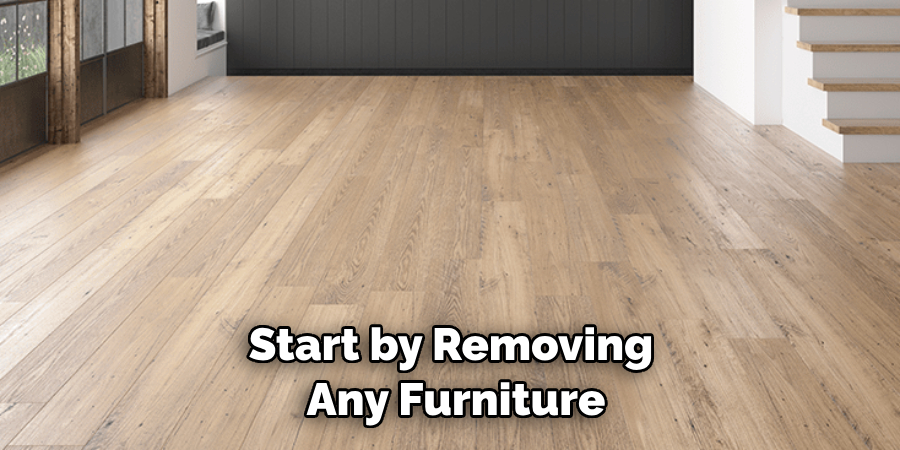
Step 3: Take Out All Transition Pieces & Remove Moldings
If you have transition pieces or moldings along the edge of your laminate floor, carefully remove them and set them aside. These can be recycled at a local recycling center depending on your city’s regulations. This step is important in order to ensure that all of the laminate flooring can be removed without damaging any other parts of your home. But remember to wear your protective equipment whenever you’re doing this step.
Step 4: Disconnect the Laminate Flooring from the Subfloor
Once all transition pieces and moldings are removed, disconnect the laminate boards from the subfloor by using a mallet, pry bar or chisel. Make sure to hit with force only when needed and take care not to damage any surrounding walls or furniture.
If you do damage the walls or furniture, be sure to repair them before moving on. It is also important to wear protective equipment when removing the laminate boards from the subfloor. If you don’t, you could be exposed to dust and debris which can cause respiratory problems.
Step 5: Sweep Up Any Debris & Dust Carefully
After removing all laminate boards and other materials from the area, use a broom and dustpan to sweep up any remaining debris and dust. Be sure to wear a respirator mask, safety glasses, and work gloves when carrying out this step. But don’t forget to wear work shoes too, as small pieces of debris can be hazardous.
If the debris is wet, make sure to use a vacuum cleaner instead of a broom and dustpan. This will help prevent any debris from getting into the air and causing respiratory problems. It is also important to avoid throwing large pieces of debris into the trash, as it can be dangerous when disposed of in a landfill.
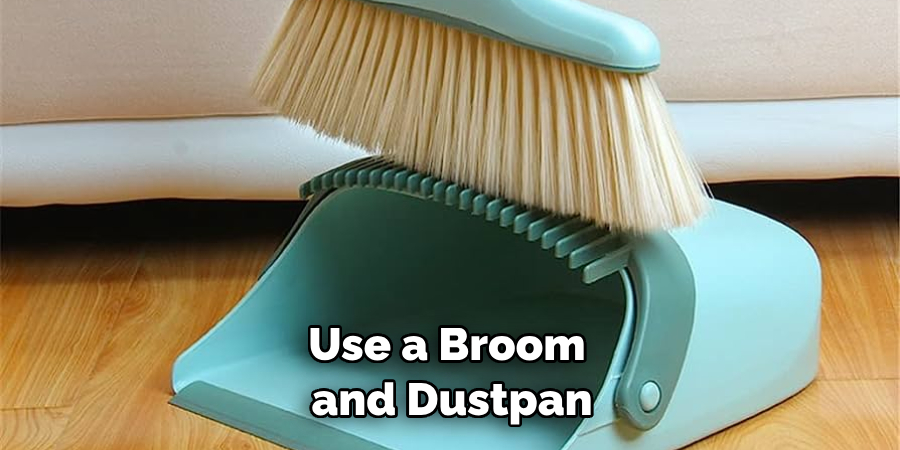
Step 6: Place the Laminate Flooring in Trash Bags or Containers
Once all of the debris has been removed, place the laminate flooring into trash bags or construction containers for easy disposal. Take care not to damage the boards by making sure they fit properly inside their designated container. If you’re disposing of the laminate flooring in trash bags, make sure to securely tie them at the top to prevent any debris from falling out. If you’re using construction containers, make sure to securely close the lid.
Step 7: Choose an Appropriate Disposal Method
Depending on your local regulations and preferences, decide on a disposal option that is best suited for you. This could include curbside pickup from your waste management provider, taking it to a nearby landfill site or recycling center, or even donating it to a local charity.
But if you decide to donate the laminate flooring, make sure it is in good condition and well-sealed before doing so. It is also important to note that some waste management companies may not accept laminate flooring as part of their regular pickup schedule. So be sure to check with them beforehand.
Step 8: Remove Any Adhesives & Clean the Subfloor
If you have used any adhesive when installing your laminate flooring, make sure to remove it from the subfloor before disposing of the flooring. This can be done with paint thinner and a putty knife, followed by vacuuming up any remaining residue.
It is also important to clean the subfloor after all of the flooring has been removed. This can be done with a damp mop and an appropriate floor cleaner before replacing the subfloor with a new one.
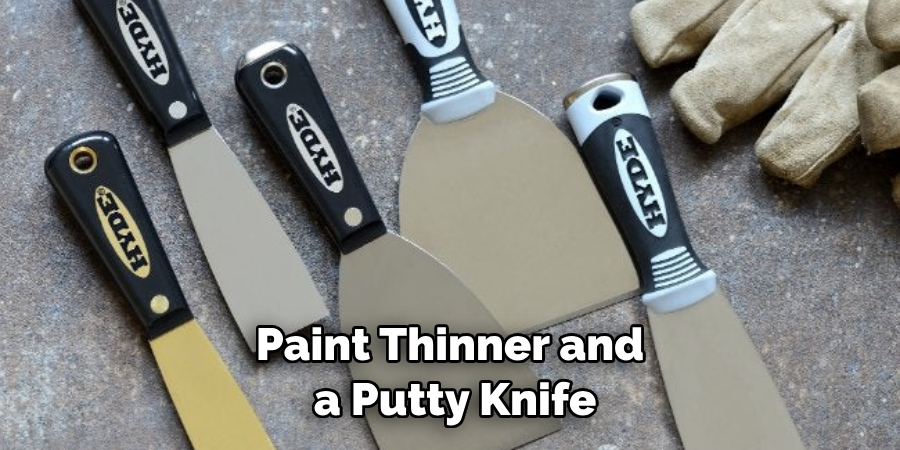
Step 9: Hire an Expert for Professional Disposal Services
For larger projects or if you need assistance with disposing of your laminate flooring, consider hiring a professional disposal company. They will be able to properly handle the job safely and efficiently while also taking care of all necessary paperwork related to disposal.
This could be a great option if you’re not sure how to dispose of the flooring yourself. It is also important to note that professional disposal services may be more expensive than other disposal options, so make sure to research different companies and prices before deciding.
Step 10: Recycle Any Reusable Materials
If any of the pieces of laminate flooring are reusable, such as transition pieces or moldings, consider taking them to a local recycling center. This can help reduce waste and give your old flooring materials a new life! You may even be able to find a local charity or organization that will accept donations of these items. But remember to wear protective equipment when handling any pieces of laminate flooring, as they may contain harmful particles.
Step 11: Dispose of Your Laminate Floor Properly
Once you have chosen an appropriate disposal method for your project, make sure to properly dispose of all laminate flooring material according to the regulations in your area. Keep in mind that some areas may require special handling and disposal methods. Moreover, be sure to follow all safety precautions during the disposal process, including wearing protective equipment and keeping children and pets away from the area.
Step 12: Clean Up & Put Everything Back Together
Finally, once you have disposed of the laminate flooring properly, take some time to clean up the area and put everything back together. This includes sweeping up any leftover debris, putting furniture back in place, and reattaching transitional pieces or moldings. Always remember to wear protective gear while doing this step and make sure that everything is properly secured before returning to normal activities.
By following these steps on how to dispose of laminate flooring safely and sustainably, you can help protect your family from potential health risks while also reducing landfill waste. With these tips in mind, you’ll have a much easier time getting rid of old laminate flooring when it’s time for an upgrade!
Frequently Asked Questions
Q: Can I Recycle Laminate Flooring?
A: Yes, you can take any reusable materials, such as transition pieces and moldings, to a local recycling center. Check with your city’s regulations to find out what materials can be recycled.
Q: How Do I Dispose of Laminate Flooring?
A: Depending on your local regulations and preferences, you can dispose of laminate flooring through curbside pickup from your waste management provider, taking it to a nearby landfill site or recycling center, or donating it to a local charity.
Q: Is It Safe to Dispose of Laminate Flooring?
A: Yes, as long as you follow the proper steps and take the necessary safety precautions when disposing of laminate flooring. Make sure to wear protective gear such as gloves, safety glasses, and a respirator mask when handling the material.

Q: How Long Does It Take to Dispose of Laminate Flooring?
A: The time it takes to dispose of laminate flooring can vary depending on the size and complexity of your project. For larger projects, you may want to consider hiring a professional disposal company that can handle the job quickly and safely.
Conclusion
Disposing of laminate flooring can seem like a daunting task, but with the tips and tricks outlined in this post, you should be well on your way to disposing of your old flooring safely and easily. Remember to contact your local waste authority and learn more about hazardous material disposal if necessary.
There may also be some recycling programs or take-back policies provided by the manufacturer for returning materials at the end of their life for reuse or recycling.
No matter what you decide to do with your old laminate flooring, ensure that you’re able to do it in the most sustainable way possible while still keeping the health of planet Earth in mind—you could even consider donating them! Whatever you decide, be sure to research all of your options before jumping into a decision. Good luck! Thanks for reading this article on how to dispose of laminate flooring.
